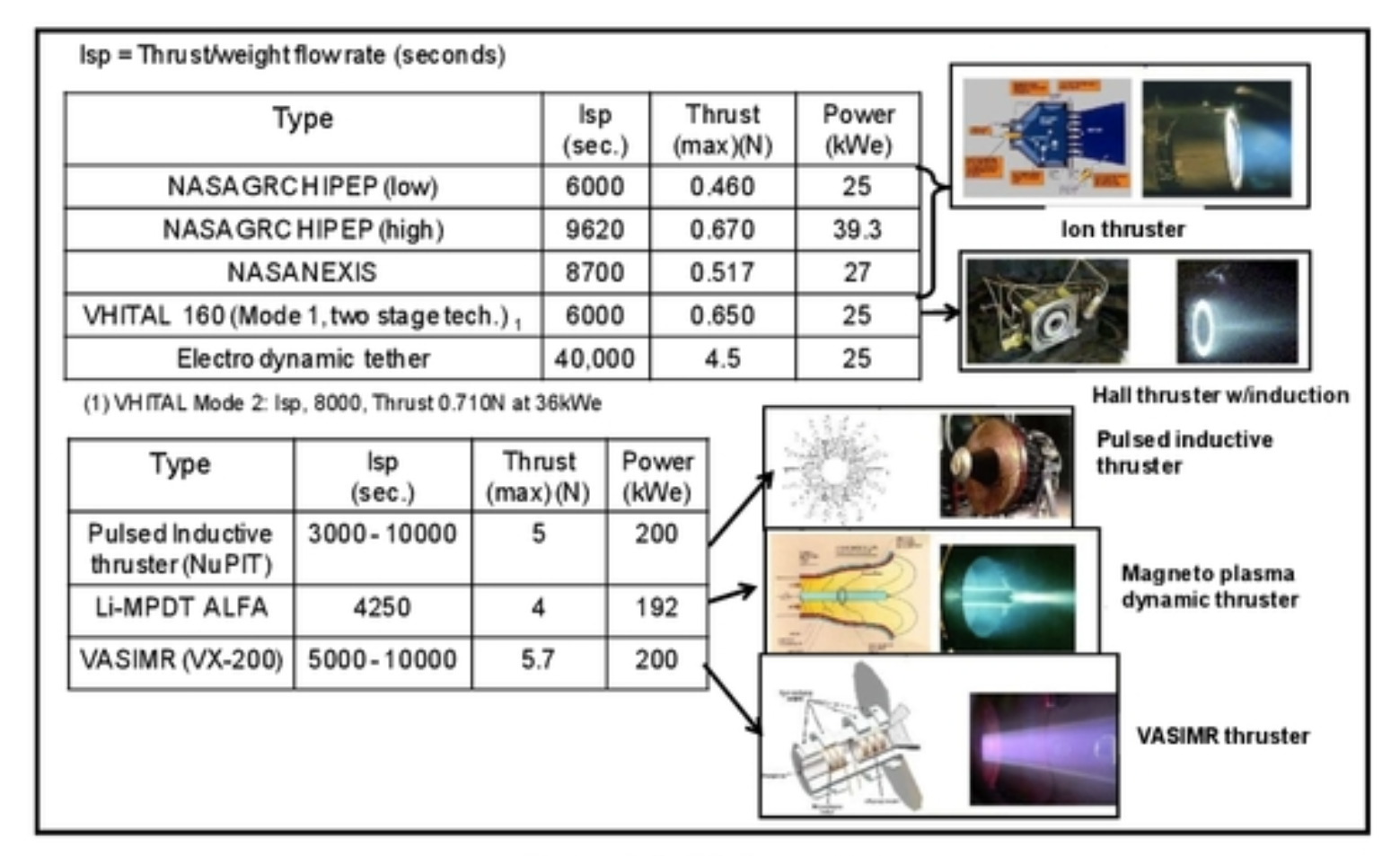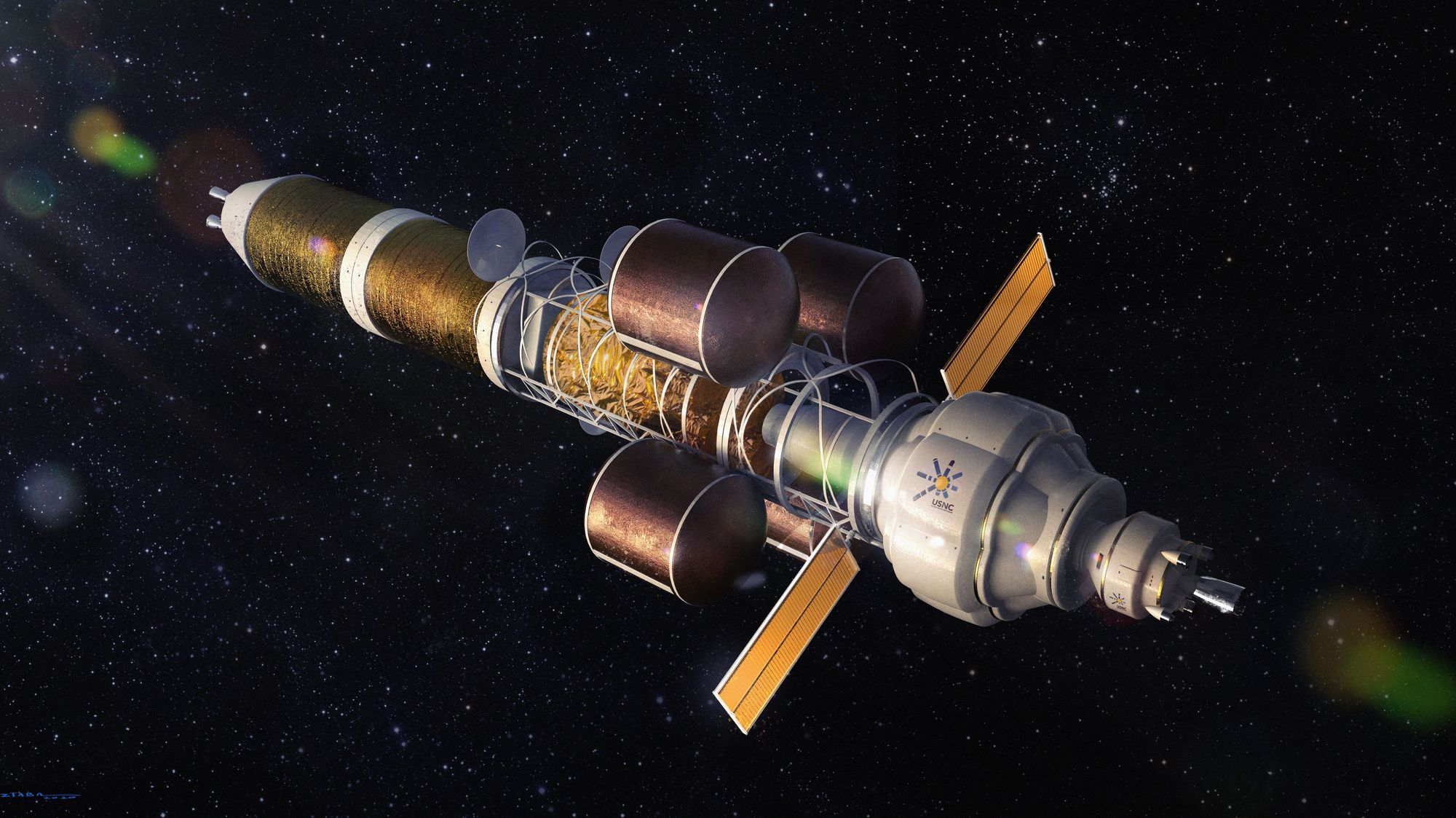Imagine a future where space travel to distant worlds is not limited by constraints of time or fuel. That future is not a distant dream, but rather an approaching reality.
With several types of nuclear propulsion systems in development, humans have never been closer to a future of quick and cheap transit, more capable satellite systems, and healthier astronauts than ever before. The two main types of nuclear propulsion include thermal and electric. Nuclear thermal propulsion utilizes a nuclear reactor to ignite hydrogen propellant creating thrust, while nuclear electric propulsion utilizes a reactor to generate electricity that positively charges xenon or krypton propellant out through an ion thruster.
Each of these systems contributes its own strengths to make the future possible. Nuclear propulsion will impact the future of deep space travel by enabling greater thrust and efficiency, while also supporting astronauts during long missions. These systems will also impact the future of orbital space travel by improving national security, while also supporting more advanced and heavier payloads.

Primarily, nuclear propulsion systems are highlighted for their superior performance in multiple performance aspects, including higher thrust and specific impulse which significantly reduces time and resources. McCoy’s publication highlights the main advantages of nuclear propulsion, explaining that “nuclear propulsion could dramatically decrease travel time to the planets. A round trip to Mars could be accomplished in half the time with fusion power […] A nuclear-propelled craft could conceivably be used repeatedly for round trips to the Moon and planets, cutting down the cost of operating such a long-term transit system” (207). Specific Impulse, denoted as ISP and measured in seconds, measures how efficiently an engine creates thrust. This is calculated by dividing the engine's thrust by the weight flow rate.
According to Obal’s “Space Nuclear Reactors” report, a traditional chemical rocket has an ISP of about 150 to 380 seconds (5-6). This is just a fraction of the specific impulse offered by a variety of nuclear electric propulsion concepts (see Fig. 2).

Due to the high efficiency and power of nuclear propulsion systems, time and resources can be significantly reduced when compared to traditional chemical propulsion.
Moving a little closer to home, nuclear propulsion systems can offer benefits in orbit by increasing national security while also enabling new concepts to be implemented. As national security remains a concern during these times, it is crucial to consider the benefits of nuclear-powered satellites in our very own orbit. As stated in an Institute for Defense Analysis report “High Powered Space Missions” written by Obal, a Space Object Surveillance and Identification System, or SOSI system, is capable of providing awareness of where any object in space is at any given moment using radar, optical, and Signal Intelligence sensors. One major role of SOSI systems is to target and attack foreign satellites. To counteract this, maneuvers can be executed to change the altitude and inclination of spacecraft simultaneously. This can induce uncertainty in the orbit estimate of foreign SOSI systems, causing them to lose track of targeted satellites, meaning it can no longer target the satellite. In order to achieve this, a propulsion system would be needed that is powerful enough to change the orbit quickly, yet efficient and light enough to be integrated into smaller satellites. These requirements are best met with nuclear electric propulsion systems (4). Another significant advantage of nuclear propulsion systems in orbit is the ability to provide power to advanced payloads that cannot be supported via solar power, for instance, Solar Based Radar (SBR) concepts in Medium Earth Orbit (MEO):
Increasing the range from LEO to MEO severely increases the power demand of the SBR system due to the range-squared losses. MEO SBR designs require a large aperture and kilowatts of power. Using solar power subsystems, designers cannot allow 100% duty cycle (operations in eclipse) of such a radar payload. Such operations require a significant increase in battery mass, making the entire system too large/heavy to launch with a single vehicle. Nuclear reactors can operate in and out of eclipse. (Obal 7)
As explained, nuclear propulsion systems allow new projects to be operated in space. Obal’s report shows that nuclear propulsion can substantially benefit satellites in orbital applications.
Furthermore, nuclear propulsion systems can improve human conditions during transit into deep space. As discussed earlier, nuclear propulsion systems will significantly reduce travel time to Mars. Jody Muelaner highlights a major benefit of this, "reduced transit time is important for crew health, reducing exposure to radiation and time in microgravity," (4). Limiting effects caused by deep space conditions is one of the many ways nuclear propulsion systems improve human conditions. Buenconsejo’s report explains how nuclear electric propulsion systems have the potential to provide auxiliary power for other vital systems onboard spacecraft. These systems are necessary for the survival of humans during deep space missions and rely on a continuous and reliable power supply to operate correctly. Examples of these systems include payload power, life support, instruments, sensors, data relay, guidance, navigation, and control. Thermal management is another essential system that requires a stable and optimal temperature onboard the spacecraft. This system is crucial for the survival of astronauts and the proper functioning of equipment (10). As seen, implementing nuclear propulsion systems would effectively improve conditions for astronauts onboard deep space missions.
Thus, nuclear propulsion systems are set to revolutionize space travel in ways not possible with current chemical propulsion systems. Nuclear propulsion systems will play a critical role in reducing trip time and costs through higher efficiency and power, enabling more robust satellite systems and national security, and improving human conditions. As these systems become more developed, it is only a matter of time before the future depicted in science fiction movies become a reality. Until then, what other ways can space travel be revolutionized?






